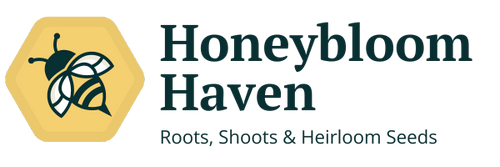Native & Heirloom Seeds FAQ
Native Seeds
What are native seeds?
Native seeds and plants are those that are naturally found in a specific region or ecosystem, as opposed to those that have been introduced or brought in from other areas. They have evolved over time to thrive in the local climate and soil conditions, and are often well-adapted to the native wildlife and other plants in the ecosystem. They can play an important role in maintaining biodiversity and supporting the overall health of an ecosystem.
Why should I plant native seeds?
There are several reasons why you might choose to plant native seeds:
-
Ecological benefits: Native plants are adapted to the local climate, soil, and wildlife, which means they require less water, fertilizer, and maintenance than non-native plants. They also provide food and habitat for native wildlife, helping to support biodiversity in your area.
-
Resilience: Native plants are better able to withstand local pests, diseases, and extreme weather conditions, which means they are more likely to survive and thrive in your garden.
-
Aesthetics: Native plants can add beauty and interest to your garden, and can also complement and enhance the natural landscape in your area.
-
Cultural significance: Native plants can have cultural, historical, and spiritual significance to the people who have lived in the area for generations.
-
Cost-effective: Native seeds and plants are often more affordable than non-native varieties, and they can be collected locally, which eliminates the cost of shipping.
By planting native seeds, you can help to preserve the local ecosystem and provide a habitat for native wildlife, while also creating a beautiful and sustainable garden in your own backyard.
How do I know if a seed is native to my area?
There are a few ways to determine if a seed is native to a specific region:
-
Look for labeling: Many seed companies and nurseries label native seeds and plants, so look for labels that indicate the seed is native to a specific region or ecosystem.
-
Research the origin of the seed: Look up the scientific name of the plant to find out where it is naturally found. Also you can consult with experts or online resources that specialize in native plants.
-
Ask the supplier: If you are unsure whether a seed is native, you can contact the supplier or the seed company and ask for more information about the origin of the seed.
-
Observe the plants in the wild: Look for the plants you are interested in growing in the wild, in local parks or conservation area, if you find them there, then the seed is likely native to your area.
It's worth noting that sometimes, a plant or seed could be native to a region but it's not suitable for certain areas or climates within that region, also, sometimes plants are considered native to a region only for a certain period of time, so it's important to be aware of the specific characteristics and requirements of the plants you are interested in growing.
How do native seeds benefit pollinators?
Native seeds and plants can provide significant benefits to pollinators, such as bees, butterflies, and hummingbirds. Some of the ways in which native plants can benefit pollinators include:
-
Providing food: Native plants have evolved to provide food for native pollinators, such as nectar for adult pollinators and pollen or host plants for their larvae.
-
Seasonal availability: Native plants often bloom at different times of the year, ensuring a consistent food source for pollinators throughout the growing season.
-
Lack of pesticides and herbicides: Native plants are not treated with pesticides or herbicides, providing a safe place for pollinators to forage for food.
-
Habitat: Native plants can provide important habitat for pollinators, such as nesting sites for bees and butterflies.
-
Genetic diversity: Native plants can provide a greater genetic diversity than cultivated varieties, which can improve the health and resilience of the pollinator population.
By planting native seeds and plants in your garden, you can help to provide a valuable food source and habitat for pollinators, which can help to support their populations and improve the overall health of the ecosystem.
Heirloom Seeds
What are heirloom seeds?
Heirloom seeds are varieties of plants that have been passed down through generations, typically by seed saving. They are often considered to be "open-pollinated," meaning that they will produce plants that are true to the parent plant when grown from seed.
Heirloom seeds have several characteristics that distinguish them from hybrid and genetically modified seeds:
-
Genetics: Heirloom seeds are non-hybridized, meaning they have not been crossbred with another plant variety. This means that the seed saved from an heirloom plant will produce plants that are genetically identical to the parent plant.
-
History: Heirloom seeds have been passed down through generations, often with a history or a story behind them. They are considered to be a link to the past and a way to preserve unique and diverse genetic heritage.
-
Adaptability: Heirloom seeds are often well adapted to specific regions and climates, and they can be grown successfully in various conditions.
-
Taste: Heirloom seeds often have a more intense flavor and better nutritional value than hybrid varieties.
-
Biodiversity: Heirloom seeds promote biodiversity by preserving the genetic diversity of plants, which is important for food security and ecosystem health.
Heirloom seeds are becoming more popular among gardeners and farmers who want to grow traditional varieties of plants and preserve the genetic heritage of different regions. They are also used by seed savers, who save and exchange these seeds to keep them in circulation and preserve the biodiversity of plants.








